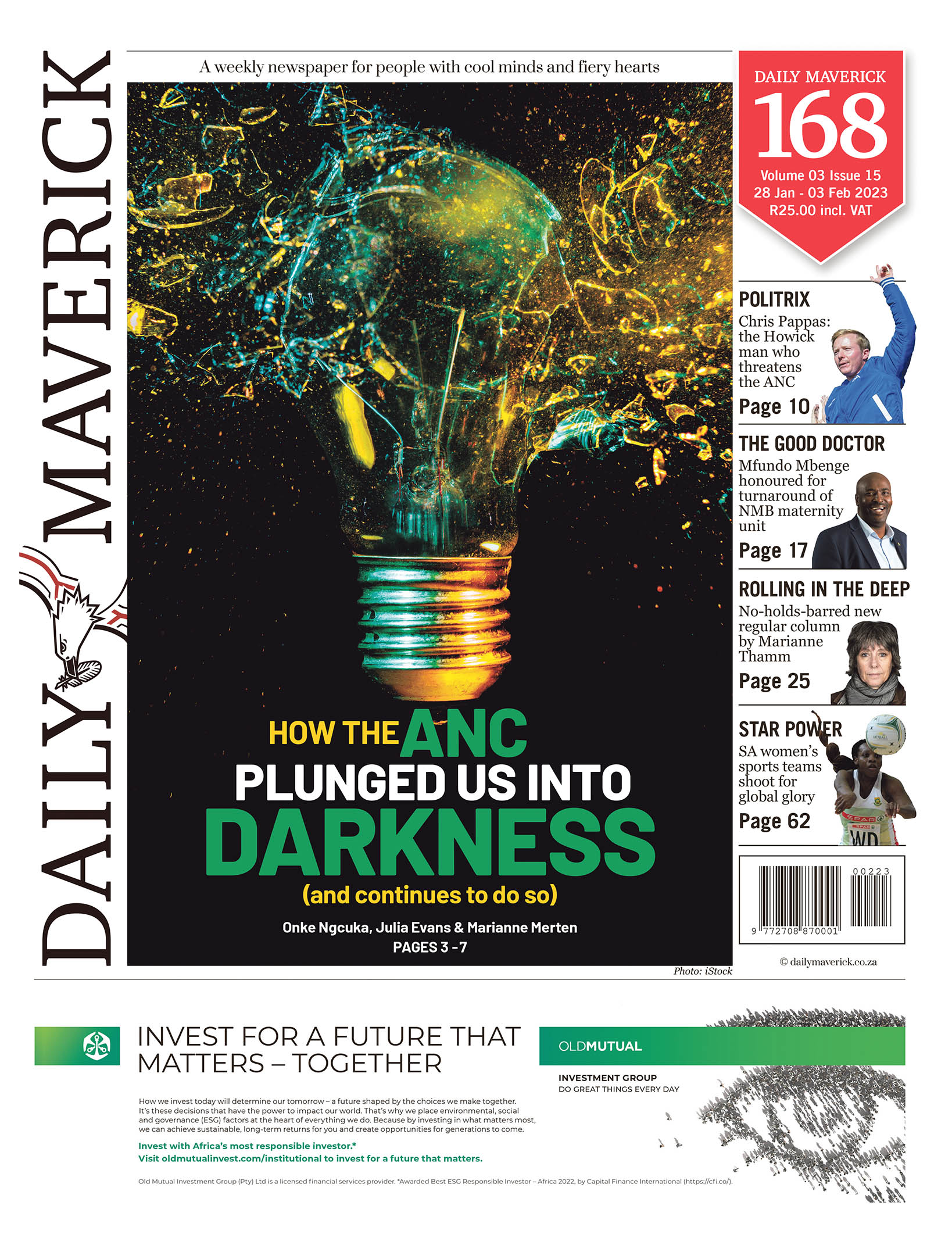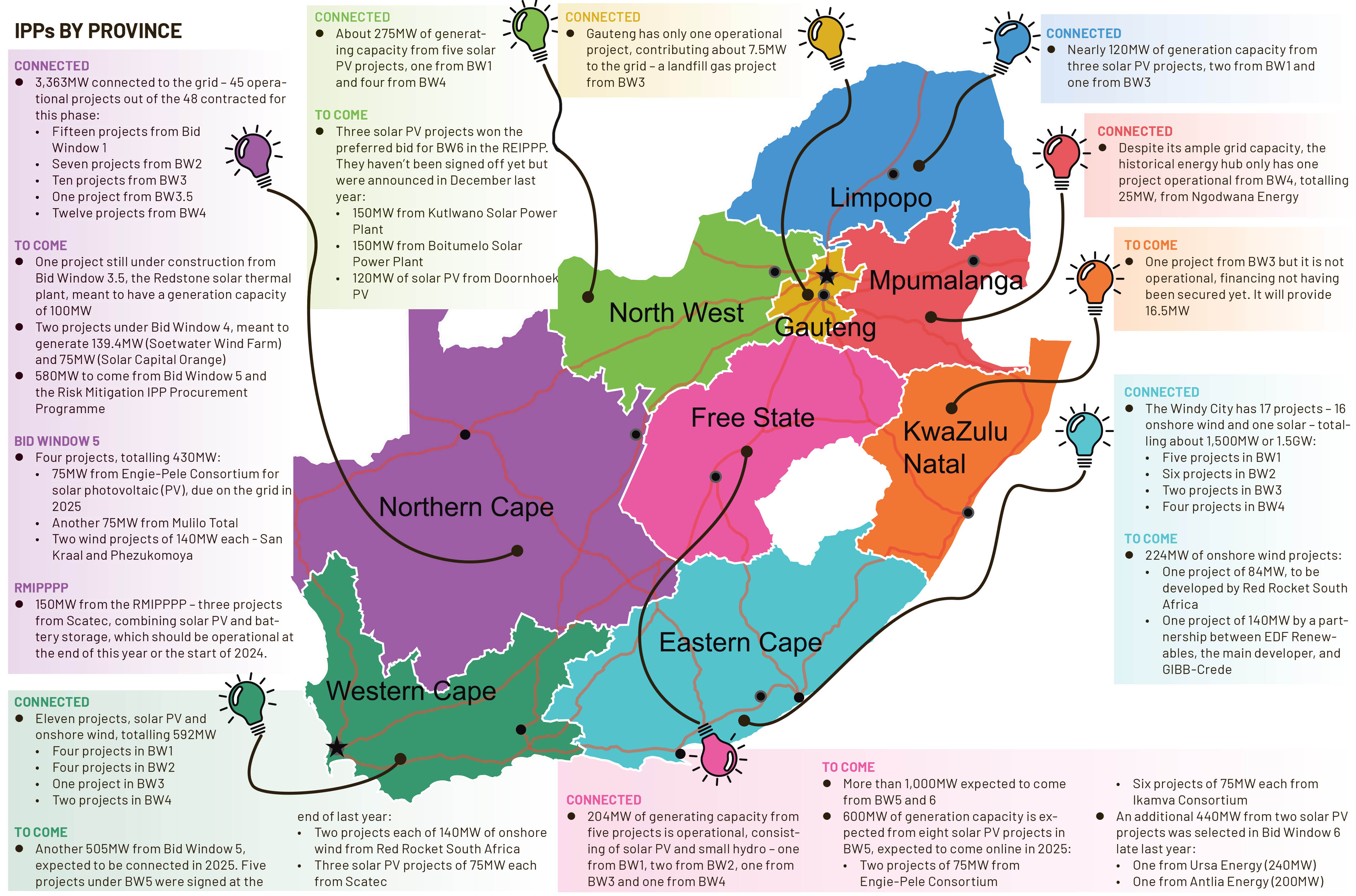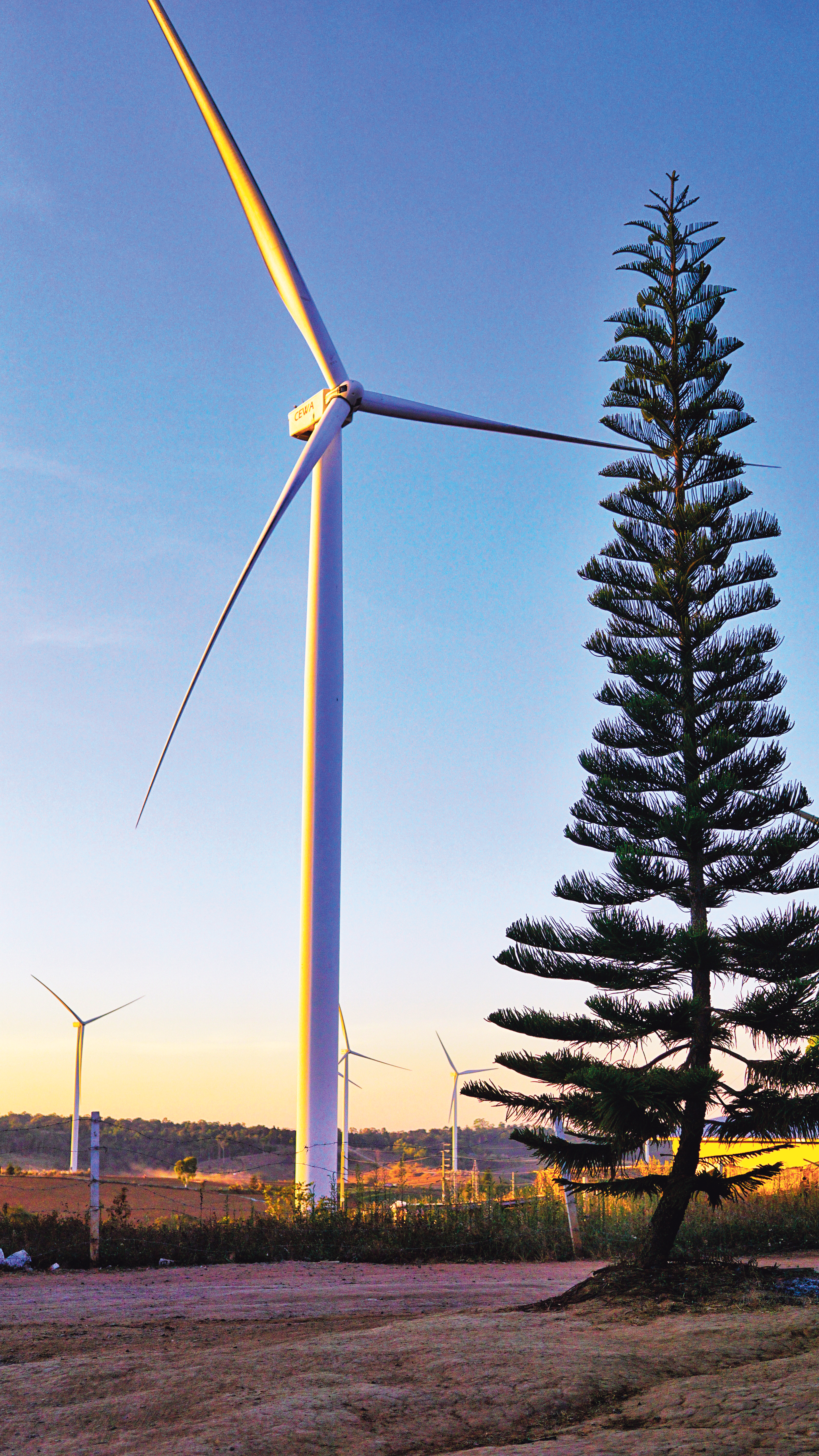POWER CRISIS
How the ANC’s years-long delays on renewables plunged SA into darkness and scuppered plan to end blackouts

Renewable Energy Independent Power Producer Procurement Programme was halted from 2015 to 2019, and then the energy minister chased a nuclear red herring.
A halted renewable energy programme, the pursuit of nuclear, and an enlarged appetite for coal are among some of the reasons South Africa’s Independent Power Producers (IPPs) have been delayed in coming online, resulting in elongated bouts of national rolling blackouts.
In 2011 (four years after the the first encounter of load shedding), the Renewable Energy Independent Power Producer Procurement Programme (REIPPP) was introduced as a means for the country to diversify its energy mix, fulfil the Integrated Resource Plan (IRP), as well as attract investment from the private sector to introduce renewable energy to the grid, while increasing its capacity.
To date, renewables (most of which built under the REIPPP) make up about 10% of the country’s electricity capacity, at about 6,200 megawatts out of a total of about 58 gigawatts of installed capacity in the country.
But there’s a difference between capacity and energy – as many coal lobbyists say.
Capacity is the maximum output an electricity generator can physically produce, whereas energy is the electricity that is actually being produced from the generator over a period of time.
And as the sun doesn’t always shine and the wind doesn’t always blow (i.e. intermittency), if we are considering energy (how much electricity is actually being produced), the sum of wind and solar makes up just 5% of the electricity actually produced in a year, according to the International Energy Agency.
This is far below where we should be, and far below the main player coal, contributing a whopping 88% of the electricity generated per year.
About 12 years later after the REIPPP was initiated, the programme signed its fifth round of IPPs in December 2022 under Bid Window 5 – this date meant to be when the projects were added to the grid, contributing an additional 2,583MW. But as they were only signed at the end of last year, they are only expected to be added to the grid in 2025.
The 19 projects under Bid Window 5 attracted R34.3-billion investment and are expected to contribute almost 8,000 jobs.
This adds to the R209.6-billion investment (equity and debt) for energy infrastructure attracted from Bid Windows 1-4.
Read more in Daily Maverick: Gwede Mantashe has harsh words for Eskom as additional 1,759MW of renewables signed up
Physics professor at the University of Johannesburg Hartmut Winkler, whose research interests include solar energy, told DM168 that the REIPPP is two to three years behind schedule.
“As far as I am concerned, it is all because Minister of Mineral Resources and Energy Gwede Mantashe (deliberately?) dragged his feet in the first years of his ministerial term. Given the schedule in the last IRP, he should have known that he would only keep up with the plan if he initiated Round 5 immediately after assuming office. There has also not been much of an effort to catch up. Bid Round 6 was still two years behind schedule,” Winkler said.
He added that between 2019 and 2020, Mantashe did nothing to propel the REIPPP and instead pursued a nuclear initiative even though the IRP wasn’t scheduled for such an energy source until at least 2030, where he pushed for the notorious 2,000MW “emergency” round, which saw the embattled Karpowership win the tender.
Read more in Daily Maverick: More late changes to gas explosion and noise studies as Karpowership enters final lap
The REIPPP was also delayed due to the programme being halted between 2015 and 2019. Then Eskom group CEO Brian Molefe strongly opposed the development of renewable energy projects, stating the technology was poor, and pledged that he would not be supporting the REIPPP beyond Bid Window 4.
Read more in Daily Maverick: Grim Reippp(er) — undoing the choke-hold on SA’s renewable energy programme
According to the latest available IPP quarterly report, as of December 2021 at least 85 out of the 92 contracted projects from Bid Windows 1-4 are operational, with a generation capacity of 5,661MW (which is 90% of the contracted capacity), contributing 71,073 gigawatts-hours to the national grid.
Historically, South Africa’s power generation has come from Mpumalanga and Limpopo, which is where most of the grid networks are, but most renewable energy projects are located in the Northern Cape, where 48 projects are situated (although only 45 are operational), due to the area’s vast wind and solar resources.
The concentration of renewable projects has seen the province’s transmission grid run out of capacity to connect new renewable energy projects, the Eskom Transmission Network report shows. At the signing ceremony of three projects under Bid Window 5 in September last year, Eskom attributed the delay (meant to be signed in April) to grid constraints.
On the other hand, provinces such as KwaZulu-Natal, Mpumalanga, Gauteng and North West have the capacity to accommodate 4GW to 7GW of generation each. KwaZulu-Natal, Gauteng and Mpumalanga each have one operational project, while North West has five.
Segomoco Scheppers, the group executive for transmission at Eskom, said at the signing ceremony, “the reality is that where we find the best renewable resources in the Northern, Eastern and Western Cape, the network is not adequately developed”.
“It’s a legacy matter, given that our base of energy has been coal,” which is in Mpumalanga and Limpopo.
Scheppers said that while renewable energy projects don’t take long to build — up to 18 months — linear infrastructure takes a lot more time at two to three years.
Additionally, they need to comply with legislation and environmental compliance matters, and reach agreements with landowners over whose property the lines pass.
Constrained grid capacity and limited generation would need to be strengthened before projects come online from Bid Window 5, which is expected to be online by at least 2025. Western Cape, home to 11 projects, as well as the Eastern Cape, with 17 projects, are also highly constrained and need additional capacity to meet demand for already approved projects, the report added.
One of the leading IPPs, which has been a part of the programme since its inception, is Norwegian energy company Scatec. The company has projects in the heavily concentrated renewable energy corridor regions of the Northern Cape and Eastern Cape, consisting of solar projects.
The company has been involved in Bid Windows 1, 2, 4 and 5, and has contributed 448MW of energy to the national grid so far. Scatec told DM168 that the cost associated with building their solar plants and/or complexes have been at up to R17.4-billion for the under-construction Kenhardt 1-3 solar and battery project, the largest project in Africa.
Barriers to the construction of the project include, for Scatec, the maturity of the renewables industry in South Africa and the competition associated with that. The high cost of such projects is also one of the challenges as upfront capital is required for the development of projects that have a limited probability of success.
However, South Africa has huge renewable potential and, as this Bid Window and new research has found, renewables are becoming increasingly cost-competitive.
Our Burning Planet previously reported that the lowest-priced wind project in Bid Window 5 was R0.34 per kilowatt-hour, while the highest was about R0.62.
While Bid Window 6 saw an 8% tariff increase due to economic challenges over the past two years, new renewables are still cheaper than new coal.
Visit Daily Maverick’s home page for more news, analysis and investigations
Risk Mitigation IPP Procurement Programme
The RMIPPPP was introduced to the market in August 2020 and aimed to close the immediate energy supply gap, and reduce the extensive use of diesel-based peaking electrical generators in the medium to long term, with the target of procuring 2,000MW of new generation capacity from different generation projects.
Read more in Daily Maverick: “‘Landmark’ power purchase agreements signed, but Mantashe still punts multiple energy technologies”
Three of the 11 projects awarded to preferred bidders in March and June 2021 were signed in June 2022, which will see Scatec contribute 150MW of dispatchable capacity to the national grid with combination of solar PV and battery storage in the Northern Cape in a year or so.
The latest bids for renewables
The latest bid, Bid Window 6, was released into the market in April this year and received almost 60 submissions.
Due to grid constraint, only five solar projects in North West and Free State were selected, contributing a total of 860MW of generation capacity, with the Department of Mineral Resources and Energy (DMRE) still in discussions with a potential sixth bidder to fill the remaining gap up to 1,000MW.
The total investment from the five projects is expected to be R12.1-billion.
This round received onshore wind bids amounting to more than 4,000MW, but as those bids were all located in the Eastern Cape and Western Cape, they had to be turned down as the grid is all tied up in those areas.
As a result, the DMRE could not award any of the wind projects up to the allocated 3,200MW of energy under this Bid Window.
DMRE Minister Gwede Mantashe said that the department is engaging with Eskom to find ways around the grid challenges, especially considering that the National Energy Regulator of South Africa is currently considering a determination for 14,791MW of new generation capacity.
What do we need to do going forward?
With the latest announcement of Bid Window 5 only expected to come online around 2025, insufficient grid space and an ailing Eskom unable to carry the country’s national needs, trying to play catch-up on the REIPPPP comes a little too late as the country experiences its worst bouts of rolling blackouts to date. DM168
Bid Window time frames and investment
Bid Window 1
- The introduction of the Renewable Energy IPP (REIPP) Bidding Programme was launched in August 2011 and, less than four months later, the preferred bidders were announced, involving 3,725MW of renewable energy technologies.
- Entered into 28 agreements on 5 November 2012.
Bid Window 2
- Entered into 19 agreements on 9 May 2013.
Bid Window 3
- Around late 2013.
Bid Window 4
- Projects signed around April 2015.
- The projected investment cost of Bid Window 4 preferred bidders’ projects is R23-billion.
- Investment for Bid Windows 1-4: Investment (equity and debt) to the value of R209.6-billion was attracted for energy infrastructure from procured projects.
Bid Window 5
- Signed end of 2022.
- The total investment attracted from all 19 projects that have signed to date under Bid Window 5 is R34.3-billion. These projects will contribute a total of 7,701 job opportunities, measured in job years, in the construction and operation of these power plants.
Bid Window 6
- Preferred bidders announced December 2022.
- For the five projects, the total investment attracted is R12.1-billion.
- Total about R256-billion from all investment attracted through REIPPP.
Risk Mitigation IPPPP
- The first three projects signed have attracted R16-billion in investment and will create about 4,968 job-year opportunities during their construction and operation.DM168
This story first appeared in our weekly Daily Maverick 168 newspaper, which is available countrywide for R25.























 Become an Insider
Become an Insider
Another bumbling bugger-up by the circus!
I quote. – “This round received onshore wind bids amounting to more than 4,000MW, but as those bids were all located in the Eastern Cape and Western Cape, they had to be turned down as the grid is all tied up in those areas.”
One question. Why has OFFSHORE wind farms not being considered? Europe is building offshore wind generation at a gale rate! The wind turbines are much bigger than onshore ones and are much more economical.
well, if even the smaller onshore projects can’t be accommodated by the grid, how would you feed in offshore? Most of SA’s coast line happens to be along the Western and Eastern Cape …
I am trying to decide which is more likely or worse:
That the government deliberately delayed for five years, or
That government is so incompetent.
Eskom have known for years the need to bulk up the transmission infrastructure. Instead of talking about it, why – for goodness sake – aren’t they just doing it? From the below quote do you get the feeling they have actually done anything other than talk about it?
“Segomoco Scheppers, the group executive for transmission at Eskom, said … “the reality is that where we find the best renewable resources in the Northern, Eastern and Western Cape, the network is not adequately developed. // It’s a legacy matter, given that our base of energy has been coal,” which is in Mpumalanga and Limpopo.
Scheppers said that while renewable energy projects don’t take long to build — up to 18 months — linear infrastructure takes a lot more time at two to three years.
Additionally, they need to comply with legislation and environmental compliance matters, and reach agreements with landowners over whose property the lines pass.”
You know what to do – just do it.